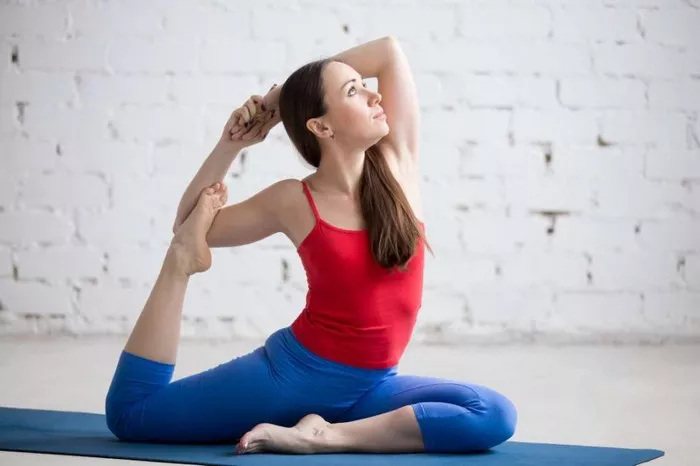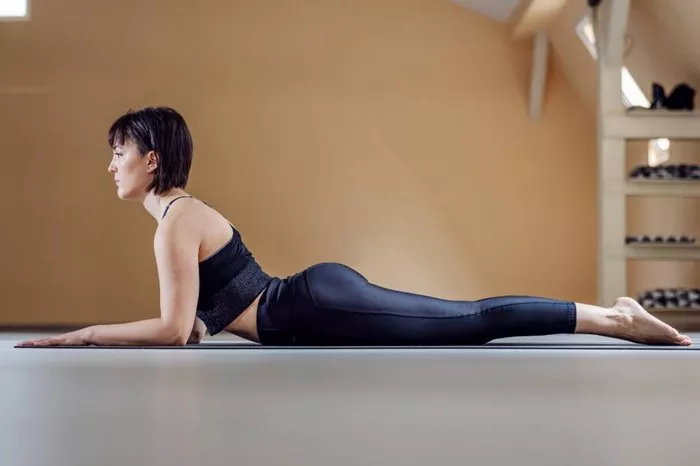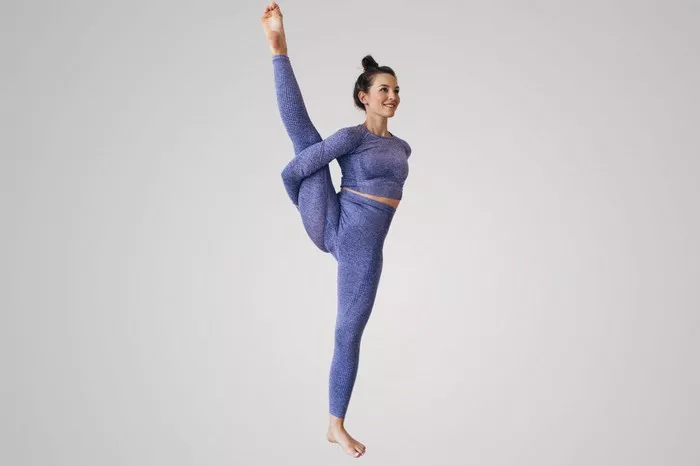Lower back and hip pain are some of the most common issues that many individuals experience in their daily lives. Whether caused by poor posture, sedentary behavior, or improper movement patterns, these discomforts can significantly affect quality of life. However, yoga can be an effective and holistic method for alleviating these pains and improving strength, flexibility, and mobility in the lower back and hips.
As a yoga instructor with years of experience, I’ve seen firsthand how regular yoga practice can relieve chronic pain and prevent future injury by strengthening and stretching the muscles around the lower back and hips. In this article, I will explore the various ways yoga can help strengthen these areas and suggest specific poses that target the lower back and hips.
Understanding the Anatomy of the Lower Back and Hips
Before diving into how yoga can help, it’s important to understand the basic anatomy of the lower back and hips, and how they are interconnected. This knowledge will give you a deeper appreciation of how certain yoga poses work.
The Lower Back
The lower back is made up of the lumbar spine, which consists of five vertebrae (L1 to L5). These vertebrae are supported by muscles, ligaments, and tendons that help with movement, stability, and posture. Common issues in the lower back include muscle strains, disc herniation, and misalignment. The muscles of the lower back include the erector spinae, multifidus, quadratus lumborum, and other deep stabilizing muscles.
The Hips
The hips are a complex ball-and-socket joint formed where the femur (thigh bone) connects to the pelvis. The hip joint allows for a wide range of motion, but this mobility can make it prone to tightness, stiffness, and weakness. Major muscles that support and move the hips include the gluteus maximus, gluteus medius, iliopsoas, and the hip flexors. Tight hips can often lead to lower back pain, and conversely, poor lower back strength can affect the hips.
The Connection Between the Lower Back and Hips
The lower back and hips are closely linked because the muscles and joints in both areas work together to support posture and movement. Tight hip flexors, for example, can pull the pelvis forward and put additional strain on the lower back, while weak glutes or core muscles can reduce support for the spine. Strengthening and loosening both the hips and the lower back can have a significant positive impact on each other.
How Yoga Can Strengthen the Lower Back and Hips
Yoga is an excellent tool for improving both strength and flexibility in the lower back and hips. Here’s how it works:
1. Improving Posture
Yoga encourages awareness of posture, which is critical for preventing and relieving lower back and hip pain. Many of the common postural habits that lead to discomfort (such as slouching or hyperextending the lower back) can be corrected with regular yoga practice. Poses like Tadasana (Mountain Pose) and Virabhadrasana (Warrior Pose) help to cultivate proper alignment, strengthening the muscles that support the spine and pelvis.
2. Strengthening Key Muscles
Yoga helps to strengthen the muscles around the lower back and hips. Poses that engage the core, glutes, and hip muscles, such as Setu Bandhasana (Bridge Pose) or Utkatasana (Chair Pose), activate these areas and build strength that can support the spine. Stronger muscles lead to better posture and reduced strain on the lower back and hips.
3. Increasing Flexibility
Tight muscles in the lower back and hips can contribute to discomfort and stiffness. Many yoga poses are designed to increase flexibility in these areas. For example, Supta Baddha Konasana (Reclining Bound Angle Pose) and Pigeon Pose (Eka Pada Rajakapotasana) target the hip flexors and the glutes, helping to release tension and improve range of motion. Increased flexibility in the hips reduces the likelihood of imbalances and pain in the lower back.
4. Balancing Strength and Flexibility
Yoga helps strike a balance between strength and flexibility. Many poses involve holding stretches while engaging muscles, which not only increases length but also builds endurance and control. This balanced approach is vital for maintaining the health of the spine and pelvis, as overly tight muscles can restrict movement, and overly weak muscles can lead to instability and pain.
5. Supporting Joint Health
Yoga enhances the health of the joints by improving circulation and promoting synovial fluid production, which helps lubricate the joints. In the case of the hips and lower back, this improved circulation reduces the risk of degeneration and supports the overall range of motion.
6. Relaxing the Mind and Body
Finally, yoga promotes relaxation, which is essential for managing chronic pain. The mindful practice of yoga can help reduce tension in both the body and mind. Deep breathing techniques, like Ujjayi Pranayama, combined with gentle stretching, release the stress and emotional strain that may contribute to muscle tightness and discomfort.
Specific Yoga Poses for Lower Back and Hip Strengthening
Now that we understand how yoga can help strengthen the lower back and hips, let’s look at specific poses that can target these areas.
1. Cat-Cow Pose (Marjaryasana-Bitilasana)
Cat-Cow is a dynamic pose that helps improve flexibility and mobility in the spine and hips. It also strengthens the muscles along the back and engages the abdominals.
- Start in a tabletop position with your hands directly under your shoulders and knees under your hips.
- Inhale as you arch your back, lifting your tailbone and head toward the ceiling (Cow Pose).
- Exhale as you round your back, drawing your belly button toward your spine and tucking your chin toward your chest (Cat Pose).
- Repeat this flow for 5-10 rounds, moving with your breath.
2. Child’s Pose (Balasana)
Child’s Pose is a gentle resting pose that stretches the hips, lower back, and thighs. It helps relieve tension and allows for a deep stretch in the lower back.
- Start in a kneeling position, then sit back onto your heels.
- Reach your arms forward and lower your forehead to the mat.
- Hold for 30 seconds to 1 minute, breathing deeply.
3. Bridge Pose (Setu Bandhasana)
Bridge Pose strengthens the glutes, lower back, and hamstrings while stretching the hips and opening the chest.
- Lie on your back with your knees bent and feet hip-width apart on the mat.
- Press your feet into the floor as you lift your hips toward the ceiling, engaging your glutes and lower back muscles.
- Keep your arms by your sides, or clasp your hands under your back for extra support.
- Hold for 30 seconds to 1 minute, then slowly lower down.
4. Downward-Facing Dog (Adho Mukha Svanasana)
Downward-Facing Dog strengthens the arms, shoulders, and legs, while also providing a deep stretch for the back and hips.
- Start in a tabletop position, then lift your hips up and back, forming an inverted V-shape.
- Press your hands into the floor, and try to straighten your legs while keeping a slight bend in the knees if needed.
- Hold for 30 seconds to 1 minute, then slowly come back to the starting position.
5. Pigeon Pose (Eka Pada Rajakapotasana)
Pigeon Pose targets the hip flexors, glutes, and lower back, providing a deep stretch to release tension in the hips.
- Start in a tabletop position and bring one knee forward, placing it behind your wrist.
- Extend the other leg straight back behind you.
- Lower your hips toward the floor and lengthen your spine.
- Hold for 30 seconds to 1 minute on each side.
6. Lunge Pose (Anjaneyasana)
Lunge Pose strengthens the legs and hips while stretching the hip flexors and lower back.
- Start in a standing position, then step one foot back into a deep lunge.
- Keep your front knee at a 90-degree angle, and lower your back knee toward the floor.
- Reach your arms overhead and hold for 30 seconds to 1 minute on each side.
7. Reclining Bound Angle Pose (Supta Baddha Konasana)
This pose is great for releasing tension in the hips and lower back while promoting relaxation.
- Lie on your back and bring the soles of your feet together, letting your knees fall open toward the sides.
- Place your hands on your belly or by your sides, and breathe deeply.
- Hold for 1-2 minutes, allowing the hips and lower back to release.
8. Warrior II Pose (Virabhadrasana II)
Warrior II strengthens the legs and hips while improving overall posture and stability in the lower back.
- Start in a standing position, then step one foot back, bending the front knee to 90 degrees.
- Extend your arms out to the sides, keeping them parallel to the floor.
- Hold for 30 seconds to 1 minute on each side.
9. Supine Twist (Supta Matsyendrasana)
This restorative pose helps release tension in the lower back and hips, especially after a long day of sitting or standing.
- Lie on your back with your arms extended out to the sides.
- Bring your knees toward your chest, then slowly lower them to one side while keeping your shoulders grounded.
- Hold for 30 seconds to 1 minute, then switch sides.
Tips for a Safe and Effective Practice
While yoga can be a wonderful tool for strengthening the lower back and hips, it’s essential to practice safely and mindfully to avoid injury.
Warm Up Properly: Always begin with a gentle warm-up to prepare the body for more intense stretches or strength-building poses. This helps prevent muscle strain.
Listen to Your Body: Pay attention to any discomfort or pain during poses. Stretching should feel like a gentle pull, not a sharp pain. Modify poses or back off if needed.
Breathe Deeply: Use the breath to guide your movements. Deep, mindful breathing helps to relax muscles and increase flexibility.
Stay Consistent: Regular practice is key. Aim to practice yoga for at least 15-30 minutes a few times a week to see noticeable improvements in strength and flexibility.
Consider Professional Guidance: If you’re new to yoga or have specific concerns about your lower back or hips, consider taking classes or working with a certified yoga instructor to ensure correct alignment and form.
Conclusion
Strengthening the lower back and hips through yoga can not only relieve pain and discomfort but also improve overall mobility and posture. By focusing on poses that target the muscles and joints in these areas, yoga offers a holistic approach to better health and wellness. With consistent practice, you can experience lasting benefits, including reduced back pain, improved flexibility, and enhanced strength in the lower back and hips.
Remember, yoga is a personal journey, and it’s important to approach it with patience and mindfulness. Through dedication and the right practice, you can achieve a stronger, more flexible lower back and hips, which will enhance both your physical health and your quality of life.
Related Topics:























